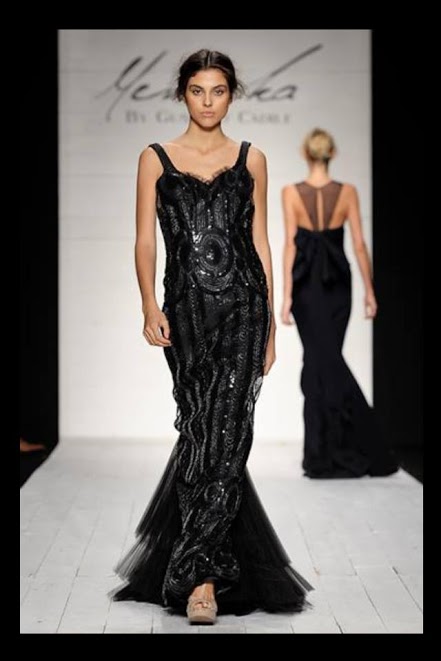Catwalk: Art vs. Pop Culture

Images of skinny girls on the runway bombard us left and right, and everyone seems to think we should be doing something about it.
Should we stay true to the beloved art form of the runway, or diversify the industry to prevent the misconstruction of body image in girls’ molding minds?
In the high fashion realm, haute couture is constructed on models with anomalous dimensions. Everyday girls are not supposed to long to look like runway models. Modeling is an art form, and appreciation of the arts should be differentiated from reflecting on one’s own body.
I sat with Michelle Mavris, New York-based model with Elite Model Management, to discuss her view on these issues.
How can we combat body image issues, such as anorexia and bulimia, with the projection of girls with unreasonable dimensions bombarding us?
“I got really sucked into the idea of being skinny,” Mavris opened up. “It’s hard not to… in the industry until I realized there is a healthy way to keep thin.”
According to the National Eating Disorders Association (NEDA), 20 million women and 10 million men in the U.S. suffer from an eating disorder in their lifetime. Even more pressing, these disorders are on the rise in the foreseeable future as girls enter adolescence with a preformed notion of the skinny aesthetic and the concept that models can achieve perfection. NEDA also reported that 40-60% of elementary school girls have already had weight concerns cross their minds. Mavris elaborated on the pros of living a positive, healthy lifestyle centered on working out, eating healthy, lots of rest and keeping a positive mentality.
Ergo one answer is: we don’t. We can separate the arts from reality. The film and television industries is where the real problem lies, rather than the runways where the clothing is in the spotlight. TV and film feature women with abnormal dimensions despite the intention to simulate real-life women.
Girls should not be looking up to runway models to base their figures.
“It’s okay to be thin, but it is also okay to not be.” Mavris adamantly claimed runway models should not be the staple anatomical model of the human figure. “People don’t have the same body shape so they have to starve themselves to reach the unattainable… Girls should be looking to those with more athletic figures such as Victoria’s Secret models for a start.”
We have to be accepting of our body types. The runway modeling industry is geared towards finding girls of a specific demographic – specific dimensions, unattainable to most lay(wo)men – to exemplify the brand’s collection.
Runway modeling should be appreciated as an art form.

Models, as artists in their own respect, must take on the roles of both mannequin and artist – a difficult feat.
The complexities in the fashion industry can be outlined in the process of creative inspiration, followed by its materialization in ready-to-wear and red-carpet ensembles. Mavris raved about the beauty in each designer creating a masterpiece – “what the world would like to wear.” Designers create outfits for the public and display it as art as they present it to the world. Runway models facilitate this depiction of their art.
“I’m here for a reason and I’m here to make a statement.” Mavris highlighted the artistic pursuit of a career on the runway, continuing on her desire to be recognized in the field and in the public eye for the qualities that define her take on the trade – walk, style, personality, and her healthy enactment in the industry.
As the number of eating disorders rises and the female sense of self-worth declines, it is our responsibility as the consumer to forge the discrepancy between real-life bodies and commercial appeal. The power is in our hands to transform the fashion industry and to validate runway modeling as solely an art form.
We can appreciate art, on the runway and within our own body image, without the putrid self-loathing.
Mavris laughs, “I see the thinnest girls eating cheeseburgers.” It’s a genetic concern; we shouldn’t turn it into a mental one.




